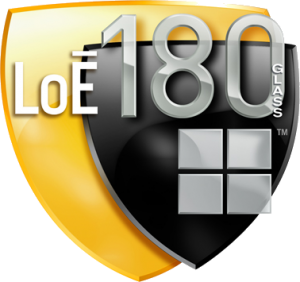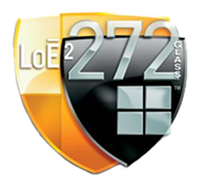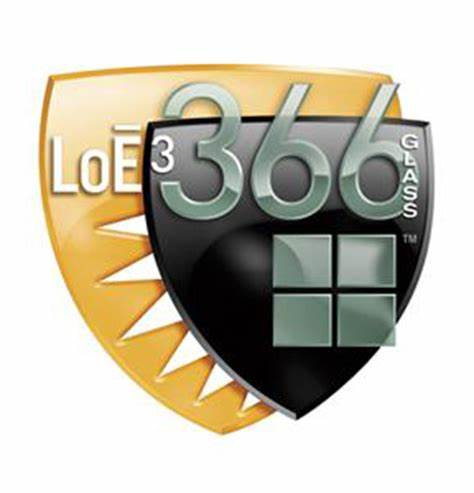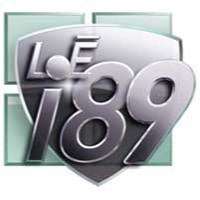How Low-Emissivity Glass Helps Your Home
High Performing Low-Emissivity Glass (LoE glass)
As the name suggests, Low-Emissivity Glass (LoE glass) is a kind of window glass that gives off low emissivity. Emissivity is the ability of a material to radiate and transmit heat.
Coatings are an important factor in the energy performance of your windows and doors. They filter long wavelengths (heat) and allow short wavelengths to pass through or vice versa.
Light-coloured surfaces like aluminium foil have a very low emissivity. Dark-coloured surfaces like asphalt have high emissivity and will get hot.
How LoE Works
These coatings are extremely thin layers applied to glass to increase your windows' energy efficiency by reducing the emissivity of one or more glass surfaces.
In winter, internal long-wave heat energy reflects inside. In the summer, the sun reflects long-wave heat energy outside, helping keep your home's interior cool all summer long.
Low-E coating reduces solar radiation or heat transference from the sun and allows light into the building. Low-E glass reduces the infrared and ultraviolet light that penetrates the glass. It also minimizes the light that enters and damages your home's interior furnishings.
In summary, Low-E coatings provide a low Solar Heat Gain Coefficient (SHGC), a low fading transmission value and a low air leaking rating (AL).
Types of LoE Coatings
Solar Control Low-E Coatings (Soft-Coat): Soft coating is produced using the Magnetron Sputtering Vapor Deposition (MSVD) process. It is applied off-line to pre-cut glass in multiple layers after it has gone through the float line process and has cooled down.
LoE coating enclosed within a double-glazed unit or an insulated glass (IG). The enclosing enables superior solar control performance, longevity and a nearly invisible coating.
The soft coat offers the best winter u-factors and up to 70% less UV transmission than standard clear glazing.
Hard Coat LoE or Pyrolitic coating: A hard-coat Low E glass is a sprayed glass coating. The hard coat LoE has a higher SHGC (Solar Heat Gain Coefficient) for passive heating applications. It is durable and can be tempered for increased safety.
Hard Coat LoE's purpose is to maximize solar heat that passes into a building. It is ideal for the Canadian climate as it can reduce the cost of heating in your home.
LoE Glass Options for Windows
LoE-180® Glass

Cardinal LoE 180 is the perfect glass for cold climates. It provides excellent insulating capability, blocking heat loss to the outside and reflecting and diffusing heat back into the room (U-Factor). With a glass U-Factor of just 0.26 and an SHGC of 0.69, LoĒ – 180 is ideal as it extends a warm welcome home while achieving the highest ER values.
LoE²-270® Glass

LoE 270 glass delivers all-season comfort and performance. In summer, heat and UV rays are blocked, and in the dead of winter, the warmth inside your home is maintained as it reflects heat into the room. It reduces solar heat gain by 50% compared to ordinary tinted glass and has a long-term energy-saving capability.
LoE²-272® Glass

Cardinal LoĒ²-272 offers a little more light transmittance. LoĒ²-272 are soft coats that go on a surface inside the glass unit to prevent touching the coating.
LoE-272 has eight layers in its coating, and these layers are what do the work of reflecting the heat. To put it in perspective, While a single pane of ordinary glass has an SHGC of 0.86, LoE2-272 SHGC of 0.41.
LoE³-366® Glass

Pronounced low E cubed-366. It offers great performance in colder weather (U-Factor) and enhanced performance in summer (SHGC). It is the ultimate performance glass with 12 layers of coating because it provides the highest levels of comfort and energy savings every season.
LoE³-366 delivers the ideal balance of solar control and high visibility as it lets in more light and keeps the heat out. The third coating layer provides great benefits of letting the light in and keeping heat out.
LoEi89® Glass

Cardinal's proprietary LoE i89 is a hard coat applied on the window's interior surface that faces inside the home. The coating is smooth, fading-protected and scratch resistant. LoEi89 improves the U-factor and SHGC of your window without upgrading to triple-paned windows.
It is an environmentally friendly window coating. With LoE i89, your window remains clean for longer periods.
Neat+ coating breaks down greenhouse gases and other pollutants that attach to your windows' surface. With Neat+ coating, fade transmission, U-factor, Visible Light Transmittance and SHGC remain unchanged with the additional layer.
Coated Glass Terms
• U-Factor Values or U-Value: This represents a measure of the insulating characteristics of the glass or how well a window prevents heat from escaping a building. U-values generally range from 0.2 (very little heat loss) to 1.2 (high heat loss). This means that a lower u-factor indicates the glass is better at keeping the heat in.
• Visible Light Transmittance (VLT): This measures how much light the glass allows to pass through a window. VLTs range from 0 (no light) to 1 (all light), and a higher visible transmittance means more light passes through the window.
• Solar Heat Gain Coefficient (SHGC): Measures how well a glass window blocks the heat from sunlight. SHGC is the fraction of solar radiation transmitted and the amount absorbed by the glass and reradiated to the building.
SHGC is expressed as a decimal between 0 and 1. A lower SHGC indicates that a window is better at blocking heat, and a higher SHGC is its shading ability.
• Light to Solar Gain (LSG): This measures the ratio of visible light to solar heat gain (LSG = VLT ÷ SHGC).
• The condensation resistance: This measures the level of resistance of the glass window. The rating is on a scale of 1 to 100, where 100 represents the highest resistance level.
• Air leaking rating (AL): This measures the number of air leaks that pass through the window. The fewer air leaks, the better the energy efficiency of the window.
